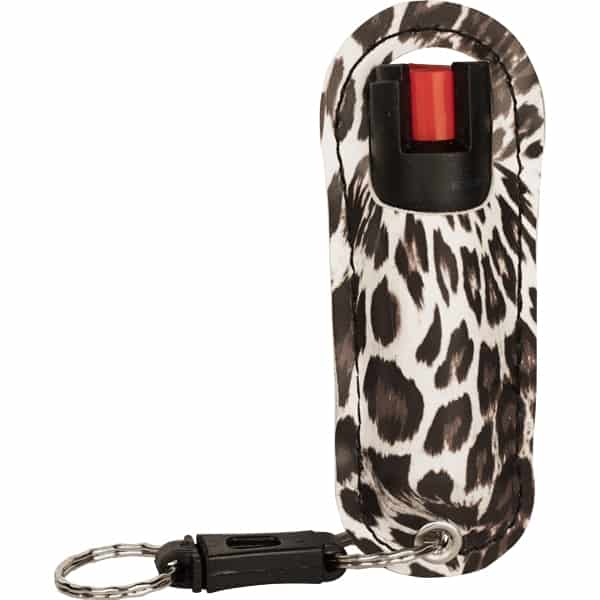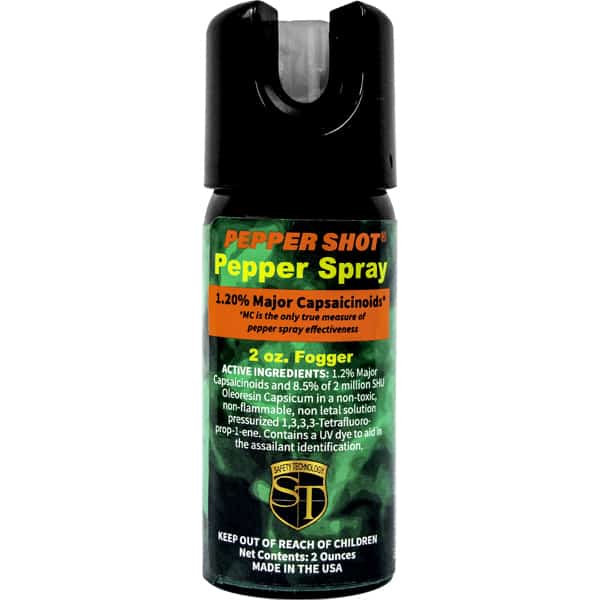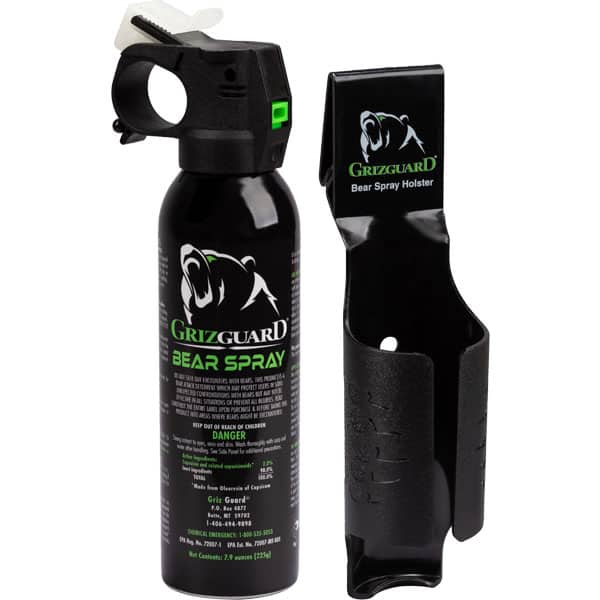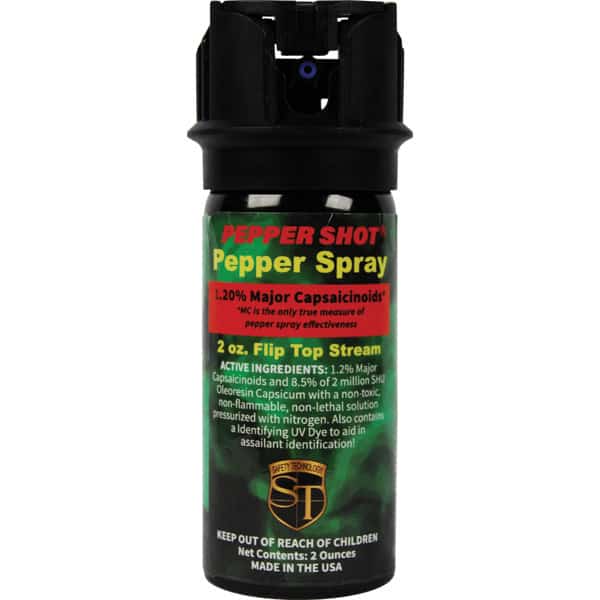
Pepper spray, also known as OC spray (from ‘oleoresin capsicum’), is a popular tool for self-defense that people use to protect themselves from attackers. It has a fascinating history and some fun facts that might surprise you.
Contrary to common misconceptions, pepper spray is non-lethal. It causes temporary discomfort by irritating the eyes and skin rather than causing permanent damage. What’s more, pepper spray has proven to be effective even against individuals who are under the influence of drugs or alcohol. This makes it a versatile and reliable tool for personal safety.
Pepper spray, also known as OC spray (oleoresin capsicum), dates back to ancient times. The ancient Chinese and Indian civilizations used pepper spray for self-defense.

The first commercial pepper spray products were developed in the 1970s by a company called Chemical Mace. Then, in the 1980s, pepper spray became popular as a non-lethal weapon for law enforcement and personal protection in the United States.
Since then, law enforcement agencies, military personnel, and civilians worldwide have widely used pepper spray. Its effectiveness as a non-lethal means of self-defense has made it a popular choice for individuals seeking personal protection.
Pepper spray comes in various forms, such as gel, steam, and fogger, each offering unique benefits and drawbacks.

When using gel pepper spray is known for its accuracy and reduced risk of blowback, making it ideal for indoor use or in windy conditions. Stream pepper spray is a type of self-defense product that delivers a concentrated stream of pepper spray to help deter attackers. A con of using stream pepper spray, though, is that it may be less effective in windy conditions as the stream can be blown off course, reducing its accuracy and potential impact. Fogger pepper spray releases a wide cloud of spray, covering a larger area and potentially affecting multiple attackers. Yet, fogger spray can also disperse quickly and be affected by air currents.
Choosing the right type of pepper spray depends on the specific situation and individual preferences.
| Type | Form | Benefits | Drawbacks |
|---|---|---|---|
| Gel | Thick substance sprayed in a stream | Accurate and less likely to disperse in air | Requires precise aim, may not cover large area effectively |
| Stream | Delivers a concentrated stream to deter attackers | More precise delivery | Less effective in windy conditions |
| Fogger | Fine mist that quickly spreads in the air | Covers large area quickly and effectively | Covers large areas quickly and effectively |

Pepper spray is a popular tool for self-defense, available in different formulations tailored for various purposes. For human protection, pepper sprays specially crafted to incapacitate and deter attackers contain a concentration of oleoresin capsicum, which induces intense burning and temporary blindness.
On the flip side, pepper sprays designed for bears and dogs boast a higher concentration of capsaicinoids. This formulation effectively deters aggressive animals without causing lasting harm. These specialized sprays cater to outdoor enthusiasts and professionals facing wildlife encounters, providing a safe, non-lethal solution for preventing potential threats.

Some pepper sprays come with a smart feature: UV dye. This helps identify the target after an attack. When the pepper spray is used, the UV dye marks the person, making it easier for the police to find and catch them later.
This extra layer of security ensures that wrongdoers can be held responsible for their actions. It also acts as a warning against potential crimes. The use of UV dye in pepper sprays shows how technology is used in personal safety products to make them better and help in seeking justice.
Pepper spray, also called oleoresin capsicum spray, is a non-lethal self-defense tool that many people use to stop an attacker. It can make an attacker feel intense pain, temporarily blind them, and make it hard for them to breathe. But it can’t make someone blind forever.
When someone gets sprayed with pepper spray, the effects usually go away after a few hours. Most people get back to normal without any lasting harm to their eyesight. However, in rare cases, people with eye problems or allergies might have stronger reactions to pepper spray. But, even then, it’s highly unlikely that it would cause permanent blindness.
Overall, pepper spray is seen as a safe and useful self-defense tool when used correctly.
Pepper spray can effectively stop an attacker from up to 10-15 feet away, despite the common myth that it only works up close. The main ingredient in pepper spray, oleoresin capsicum, can cause a strong burning sensation, irritation, and temporary blindness, making it a useful tool for self-defense even from a distance.
Some people think pepper spray only works well when sprayed directly in an attacker’s face, but it can still be effective from a distance because it spreads through the air and affects the respiratory system. So, remember, pepper spray can keep you safe even if you’re not right beside your attacker.
Pepper spray is legal in all 50 states, but some locations may have specific laws and restrictions regarding its usage and purchase. While it’s generally seen as a non-lethal self-defense tool, regulations ensure it’s used responsibly and prevent misuse.
In some states, individuals may need to be a certain age to buy pepper spray, or there may be restrictions on where it can be used in public places. It’s important for people to know and understand their local laws and rules before getting or using pepper spray to make sure they’re following the rules and staying safe.
The Transportation Security Administration (TSA) has specific guidelines on the amount and type of pepper spray allowed on flights. It is recommended that you check with the airline and TSA for the most up-to-date rules.
The Scoville Heat Units (SHU) scale measures the heat level of pepper spray. It measures the concentration of capsaicin, the compound responsible for peppers’ heat. The higher the Scoville rating, the hotter the pepper spray.
Pepper Spray Wholesale provides non-lethal self defense products and hidden cameras for you, your loved ones and your home. If you have any questions about the products, do not hesitate to Contact Us. Stay Safe!
Pepper Spray Wholesale
1867 Caravan Trail
Ste 105
Jacksonville, FL 32216
Call us toll free: (800) 859-5566